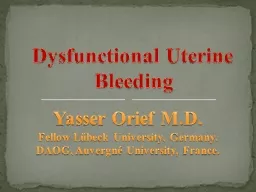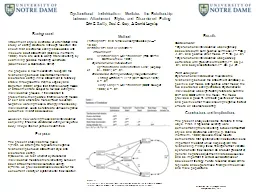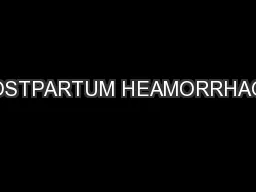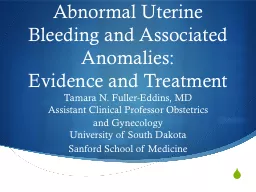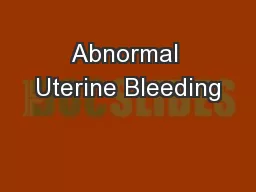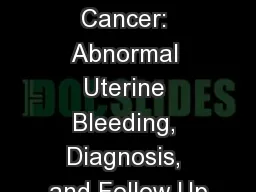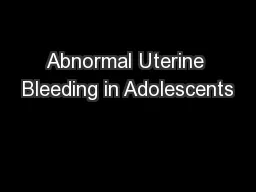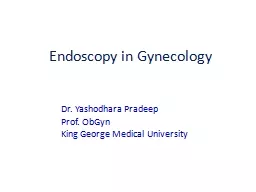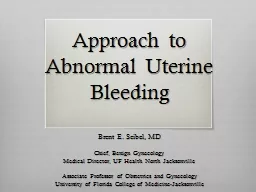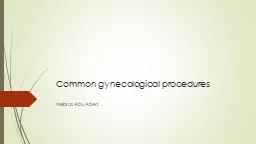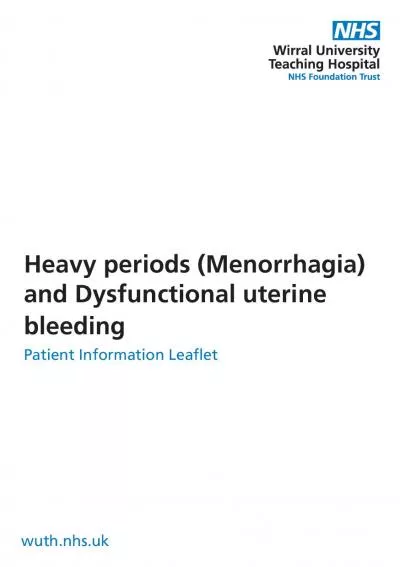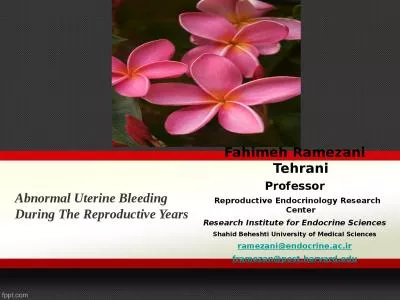PPT-Dysfunctional Uterine Bleeding
Author : olivia-moreira | Published Date : 2020-04-10
Yasser Orief MD Fellow Lübeck University Germany DAOG Auvergné University France Case 1 CO Irregular menses x 6 months 23 yo G1P1 2 menses in past 6 months
Presentation Embed Code
Download Presentation
Download Presentation The PPT/PDF document " Dysfunctional Uterine Bleeding" is the property of its rightful owner. Permission is granted to download and print the materials on this website for personal, non-commercial use only, and to display it on your personal computer provided you do not modify the materials and that you retain all copyright notices contained in the materials. By downloading content from our website, you accept the terms of this agreement.
Dysfunctional Uterine Bleeding: Transcript
Download Rules Of Document
" Dysfunctional Uterine Bleeding"The content belongs to its owner. You may download and print it for personal use, without modification, and keep all copyright notices. By downloading, you agree to these terms.
Related Documents

